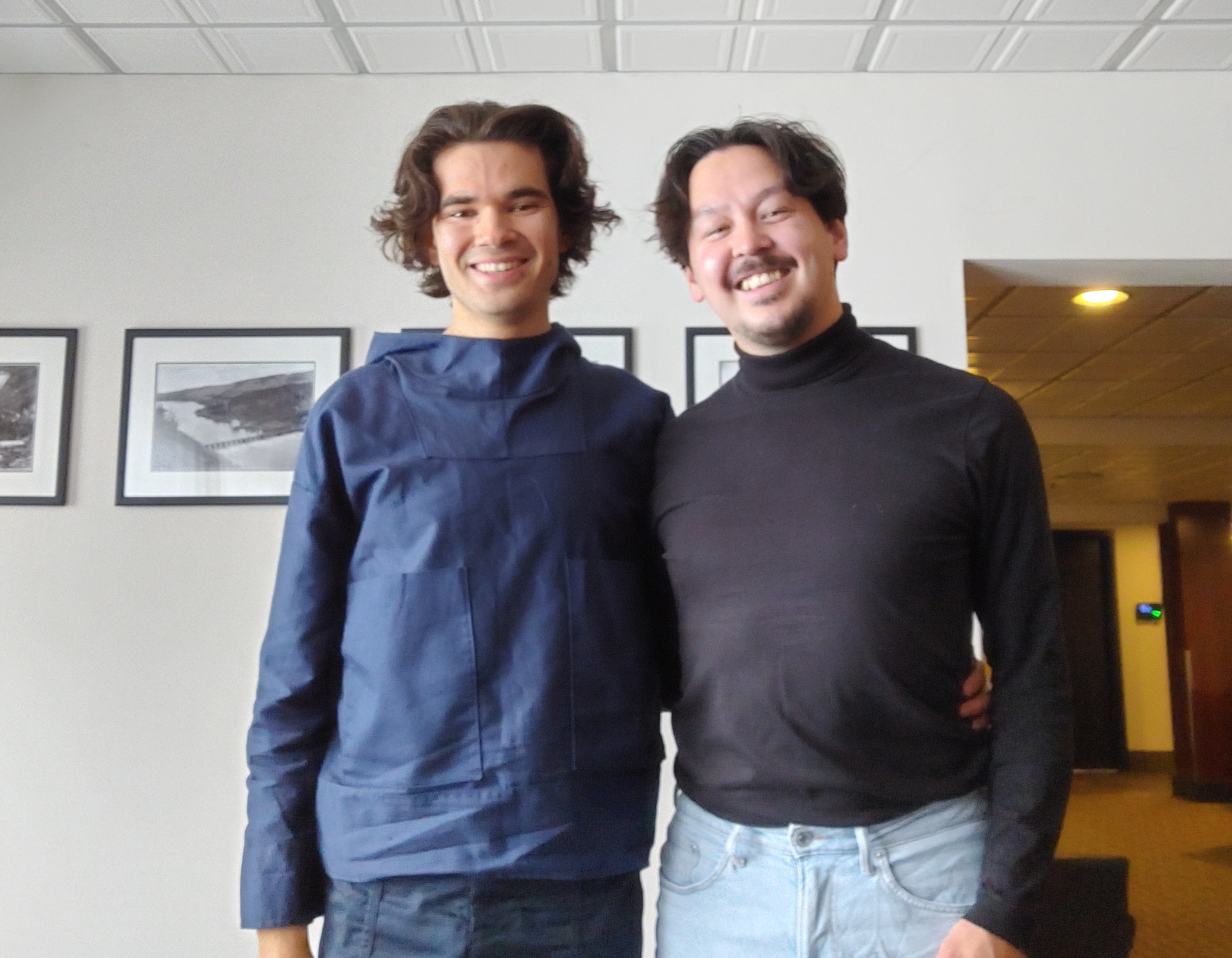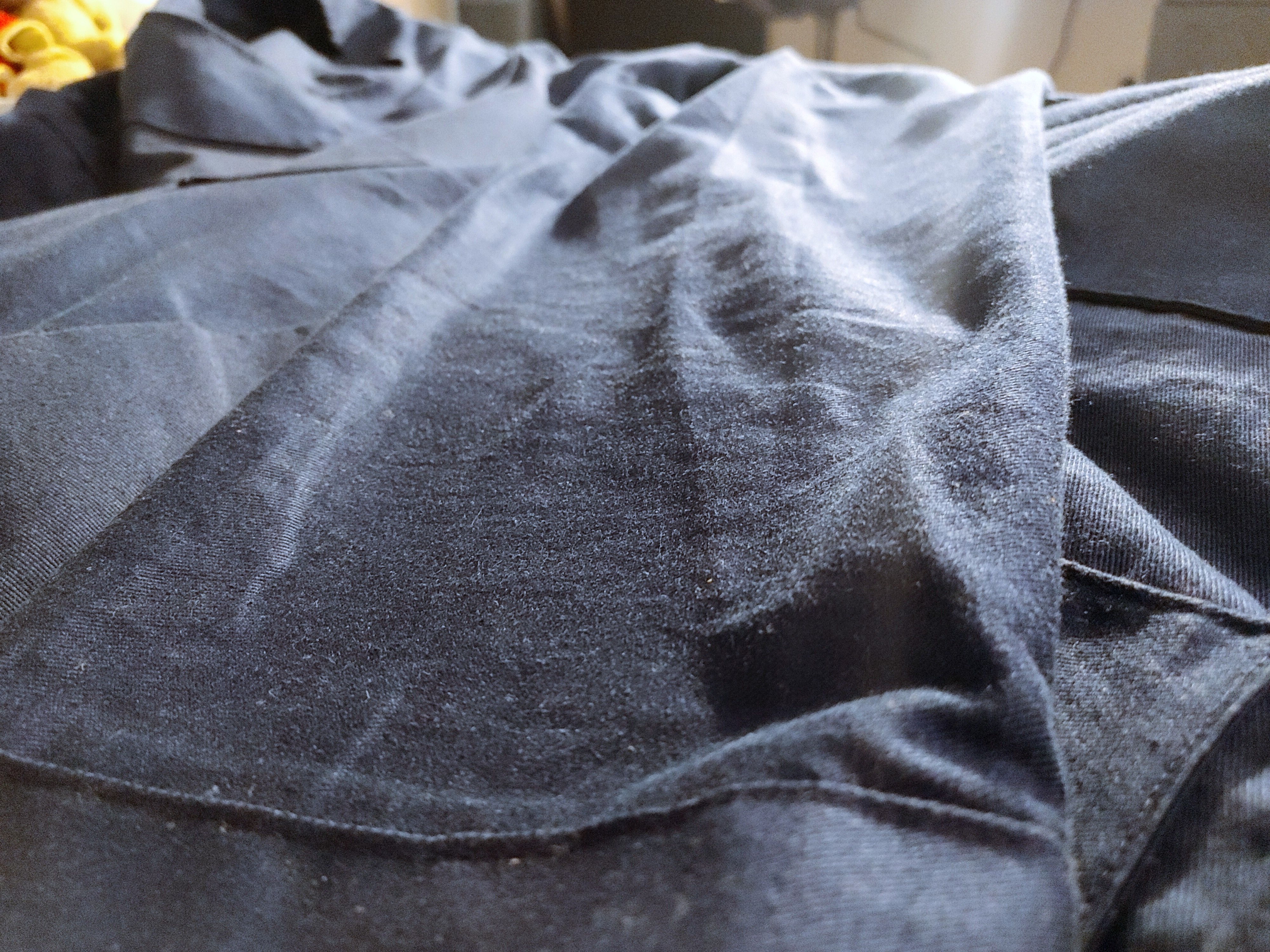Presenting Cultural Identity Through Traditional Clothing
Inuit Art Foundation | October 21, 2022
Categories: news
Oct 21, 2022
by Jonas Henderson

When I was 12 years old, I saw Skyfall, my first James Bond movie. While it had all the thrills and spectacle that my middle-school self adored, it was also the first time I became aware of a whole new dimension of self-expression: fashion. I was struck by how confident Daniel Craig appeared in his Tom Ford suits and sunglasses and I wanted to exude that same confidence. I started putting more time and effort into my appearance and trying to find clothes that made me look more like Bond. While most of my initial fashion experiments were embarrassing at best, I’m still grateful for the inspiration to expand my self-expression and realize the possibilities of clothing.
Fast-forward 10 years to this past June, and I’m sitting in the lobby of the Alt Hotel Winnipeg with all of the other Inuit Futures ilinniaqtuit (students), waiting to depart for the Arctic Arts Summit in Whitehorse, YT. I sat snugly on one of the couches, sewing the fastenings on a pair of high-waisted navy blue pants on which I had been working for the past month. Upon noticing this, one of the other students excitedly told me about an artist and fellow Kalaaleq, Hans-Henrik “H.H.” Suersaq Poulsen, who also sews his own clothing.
She told me that H.H. would be attending the Arctic Arts Summit and offered to make introductions. I was mildly interested but was mostly preoccupied with finishing my pants (only the second garment I had ever sewn, the first being a simple shirt) so I could wear them on the journey to Whitehorse.
The highlights of the Arctic Arts Summit are numerous—it’s no exaggeration that I was a different person by the time the four-day festival ended. One of the most memorable details of the experience was my exposure to a diverse collection of traditional garments from various arctic cultures.
It should be noted that, while my upbringing was heavily influenced by my Inuit heritage and a good part of my family’s livelihood came from my father’s work as an Inuk artist, I grew up completely down south in the Okanagan Valley, BC—one of the hottest parts of the country, no less! I’ve always been fairly comfortable with this fact and never felt that growing up as part of a diaspora made me any less Inuk; however, it did mean that accessing certain traditional items such as clothing was more difficult.
Returning to the conference, seeing the Sámi in their gákti and Greenlanders in their kamiit, I suddenly felt bland and tacky walking around in a jacket that I had picked up from my local HBC. I became possessed by the urge to express my culture and heritage through fashion in a way I hadn’t been able to before (with the exception of two silver pendants created by my father—one elongated piece with inuksuit stamped on its surface, and one thunderbird). I felt seriously insecure about my Inukness as I had no traditional clothing of my own. Unfortunately, this insecurity followed me throughout the Summit.
On the final day of the event, I had the pleasure of sitting on my first panel, the closing talk. Four other panelists and myself reflected on the impact of the Summit and provided recommendations for future events—an intimidating task for a first-time panelist! We discussed a diverse range of topics but the one that was most personally important to me was clothing. I expressed my admiration for how all the arctic cultures represented at the panel were united by a love for self-ornamentation and beautiful clothing. I subtly alluded to my sadness due to my lack of traditional Greenlandic garments. Little did I know that this onstage comment would be of great importance only a day later.
After the Summit concluded, all the Inuit Futures students had one free day to explore Whitehorse and unwind before saying tear-filled goodbyes and making our journeys home. I took advantage of this free day to complete one of my assignments, which was to interview an artist. I approached Hans-Henrik, whom I had met briefly earlier in the week. I knew that he had a uniquely diverse body of work, including acting, singing, dance and designing both Inuit and non-Inuit garments.
When we met in the lobby, I noticed he was carrying a bundle of fabric under his arm—he had told me beforehand that he had a present for me. I was taken aback, as what he carried seemed much more intricate and bulky than anything I had expected. After saying our introductions, he unfolded the garment and presented me with a gorgeous, simple navy blue top with long sleeves, a hood and pockets on the front.

“You seemed sad at your panel that you didn’t have any traditional clothing, so here’s an annoraaq I made!” I was at a loss for words. For context, an annoraaq is the main garment of the male Greenlandic national costume, usually worn with black pants and kamiit. Traditionally the annoraaq is white, but Hans-Henrik had created a more everyday-use annoraaq, hence its blue colour. After thanking him in both Greenlandic and English multiple times, and telling him that I couldn’t possibly accept such a gift (while secretly hoping that he would insist I take it), he proudly told me that now I could “represent Greenland.”
After the interview, I excitedly ran back upstairs to my room and tried the annoraaq on for size. It fit (thank goodness) and made me feel that I looked properly Greenlandic. It was quite comfortable, as it was made of cotton and not too heavy. Finally, I could express my culture through clothing. I giddily wore it around my room and to the ilinniaqtuit morning debrief and sent pictures of it to all of my family and friends to show off how beautiful I felt in my first annoraaq.
While gifting me such a culturally important item is noteworthy as an extreme act of kindness, receiving my annoraaq was also a validating experience. It made me feel seen and appreciated as a Kalaaleq. The fact that someone who was born and raised in Greenland wanted me to be able to express my Greenlandic heritage with a beautiful garment made me feel so accepted by a culture that feels both incredibly near to me and, at times, astonishingly far away. I will forever be grateful to Hans-Henrik for giving me such a meaningful gift, and for giving me this opportunity to express my cultural identity through the striking medium that is fashion.
Jonas Henderson was born and raised in the Okanagan Valley, BC. However, he traces his roots back to the community of Qaqortoq in Southwestern Greenland. He is entering his final year of civil engineering at McGill University, and after he graduates he plans to pursue a master's degree in architecture and, one day, establish his own practice.
Henderson is currently working as an intern at the Canadian Centre for Architecture (CCA) with the Inuit Futures in Arts Leadership Program. Henderson spends his spare time doing architectural and fashion drawings as well as short video production, photography and sewing. Recently, he has begun to work with his father, Inuk sculptor Jonasie Faber, to learn the art of sculpting. He is eager to gain more artistic skills so he can better express himself through multiple forms of media.
This series was made possible with the generous support of the Canada Council for the Arts.


